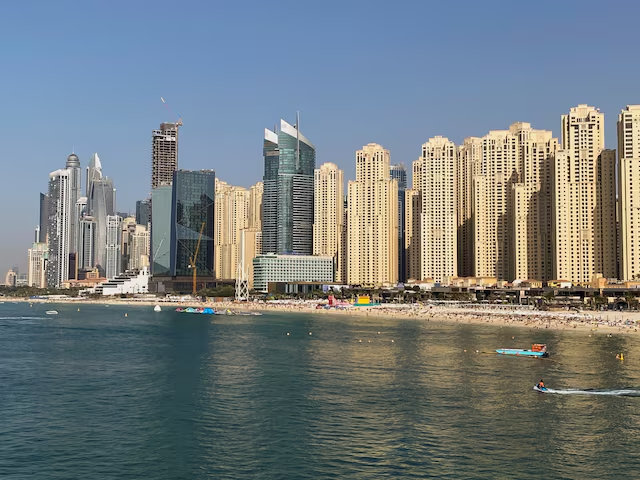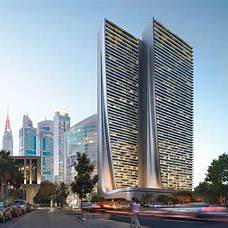
The UAE’s real estate sector, especially in cities like Dubai 🏗️ and Abu Dhabi 🌆, has become one of the most talked-about property markets in the world. With its iconic skyscrapers, tax-free lifestyle, and open-door policy for investors, it has consistently attracted international buyers.
But behind the glamour and growth, a pressing question has emerged: Is there an oversupply of property in the UAE? And if so, could it lead to a market crash? 💥
Let’s break it down and explore whether these concerns are justified, what the data says, and what it all means for investors and residents.
🚀 A Decade of Booming Growth
Since the early 2000s, the UAE has undergone a massive transformation. Foreign ownership laws, world-class infrastructure, and mega-events like Expo 2020 helped position Dubai and Abu Dhabi as global property investment hubs.
Real estate developments like Palm Jumeirah 🌴, Downtown Dubai 🏙️, and Yas Island 🏖️ have become symbols of rapid growth and ambition. With billions poured into the sector, developers raced to meet the growing demand.
📉 What Is Oversupply?
In simple terms, oversupply happens when more properties are built than there are people to live in or investors to buy them. This imbalance often leads to:
- Falling property prices 📉
- Decreased rental yields 🏘️
- Longer vacancy periods ⏳
- Lower investor confidence 😬
In extreme cases, sustained oversupply can cause a market correction or even a crash.
🏗️ Is There an Oversupply in the UAE?
Yes — but it’s more complex than it seems.
Over the past decade, especially between 2014 and 2020, Dubai saw a surge in new housing units. Developers were optimistic about population growth and economic expansion. As a result:
- Thousands of new residential units were launched every year 🏘️
- Supply outpaced demand, especially in mid-market and high-end segments
- Rent and sale prices dropped by over 30% in some areas
Even in 2024, Dubai is expected to add over 30,000 new units, while Abu Dhabi adds several thousand more.
🧭 What’s Driving This Oversupply?
Several factors contribute to the current state of oversupply in the UAE:
1. Aggressive Development Plans 🏗️
Developers often launch massive projects anticipating long-term demand. However, if this demand doesn’t materialize fast enough, it creates a surplus of units.
2. Expo 2020 Expectations 🎡
Leading up to Expo 2020, developers rushed to complete projects. While the event boosted the economy, the anticipated long-term population spike didn’t happen as fast as expected.
3. Population vs. Property Growth 👨👩👧👦
Dubai’s population is growing, but not at the same pace as new properties entering the market. In 2023, Dubai’s population grew by around 100,000 people, while over 40,000 housing units were completed — that’s 1 new home for every 2.5 new residents, which may seem balanced but becomes an issue if many of those homes are luxury properties that not everyone can afford.
💼 Why Hasn’t the Market Crashed?
Despite concerns, the market hasn’t crashed — and here’s why:
1. Government Regulation 🛡️
Authorities like the Dubai Land Department (DLD) and RERA have introduced rules to regulate off-plan sales, escrow accounts, and project timelines — helping to reduce speculative buying.
2. High Net-Worth Influx 💰
Since 2022, Dubai has seen a large number of wealthy expats and investors relocate from Europe, Russia, and Asia. The demand for luxury villas and branded residences has surged, especially in areas like Palm Jumeirah and Dubai Hills Estate.
3. Golden Visa & Residency Reforms 🛂
The introduction of 10-year Golden Visas for investors and professionals has encouraged long-term residency, increasing demand for home ownership.
4. Economic Resilience 💪
The UAE’s economy has proven adaptable, with strong recovery post-COVID, growing tourism, and increasing foreign investment. This economic strength supports housing demand.
📊 Segment-Specific Oversupply
It’s important to note that not all parts of the market are equally affected.
- Luxury Segment 🏰: Surprisingly strong. Villas and waterfront properties have seen price appreciation of up to 20% YoY.
- Mid-tier Apartments 🏢: Oversupply is most pronounced here. High inventory levels and limited end-user demand are leading to price stagnation.
- Affordable Housing 🏘️: Still in demand, but underserved. Developers tend to focus on higher-margin luxury projects, creating a gap in this segment.
⚠️ Risks of a Future Correction
While the UAE has so far avoided a full-blown crash, some risks remain:
📉 1. Rising Interest Rates
Higher borrowing costs could reduce mortgage demand, especially among first-time buyers.
🌍 2. Global Recession
If the global economy slows down, investor appetite for overseas real estate could shrink, reducing demand.
🧱 3. Developer Speculation
If too many off-plan projects are launched without real buyer demand, it could flood the market again.
🚧 4. Vacancy Risk
Empty units mean lower rental yields. If landlords can’t find tenants, prices may need to fall to attract buyers.
🧠 Smart Investment Strategy for 2025
So, should you still invest in UAE property? The answer is: yes, but wisely. ✅
Here are a few tips:
- Focus on Location 📍
Well-connected areas with lifestyle amenities (like Dubai Marina, Downtown, or Saadiyat Island) hold value better. - Look for Completed Projects 🏢
Buying ready units reduces construction and handover risks. - Consider Short-Term Rentals 🏡
Holiday home demand is rising. Short-term lets can offer higher yields in tourist hotspots. - Stick to Affordable or Luxury Ends 🏰/🏘️
Avoid the oversaturated middle. Focus on either luxury or affordable housing, where demand is stronger. - Check Developer Reputation 🏗️
Only buy from reputable developers with a history of delivery.
🧾 Final Thoughts
The UAE property market is not crashing, but oversupply is real — especially in certain segments. Government reforms, foreign investment, and high demand for luxury homes have kept the market stable and even growing in key areas.
However, that doesn’t mean the market is immune to corrections. The safest path forward is to invest carefully, stay informed, and focus on value-driven assets.
Whether you’re a buyer, investor, or renter, keeping an eye on supply-demand dynamics 🧐 will help you make better decisions in 2025 and beyond.
✅ Summary in Emojis:
🏙️ → Growing skyline
🏗️ → Too much construction?
📉 → Risk of falling prices
💰 → Still demand from the wealthy
🛡️ → Regulations improving
📈 → Smart investments still pay off
⚠️ → Oversupply risk is real
🏘️ → Choose wisely, don’t follow the hype
Want help analyzing a specific area or project in the UAE? Drop your questions below or reach out! 📩 Let’s make your next real estate move a smart one. 🏡✨





Leave a Reply